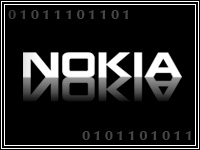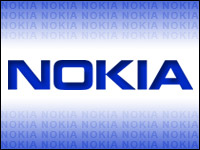
Will Stephen Elop, the new Nokia CEO, be able to turn the company around? That is the question. It all depends on what he does — this is a big job. He has to focus on transforming not only the technology, but also the brand. He has to reinvent Nokia’s image in the mind of the customer. Will it work? Will Nokia be able to re-energize with new leadership, or is it in the process of passing the torch to the next generation of competitors?
The company is foundering, and it has not been able to right the ship yet. That’s the reason for bringing in Elop from Microsoft. Unfortunately, Microsoft has been struggling in the smartphone space as well.
First, it will be instructive to pull the camera back and take a look at the big picture. Nokia has been a success since the 1990s. Then its wheels fell off, and its struggle to get back on track has so far been unsuccessful. Where did Nokia go wrong, and what does it have to do to stay relevant in a suddenly different industry? Can it succeed?
Brief History
It all started in the 1990s when Motorola was No. 1 in the handset market. Motorola was a strong U.S. company that had been around for decades, making all sorts of communications devices for police and emergency workers. It was even in the mobile phone business years before cellular took off. Motorola eventually became the leader of the cellphone handset business as well.
Motorola led the handset market from the 1980s through the mid 1990s. Its last success during that period was the StarTac, an analog cellphone that looked similar to the communicator on TV’s “Star Trek.” Beam me up, Scotty. That was the first time consumers could get such a small and fun device for keeping in touch, and it was a big success.
Then something happened. The industry switched from analog to the first generation of digital, and the race changed overnight. By that time, Motorola had become fat and happy. It never thought the entire industry could — or would — transform until it was ready. The company’s leaders thought they had plenty of time — but they were wrong.
Gadget users liked being able to send and receive email and text messages, and even surf the Web.
Nokia quickly moved into the No. 1 handset manufacturer space while Motorola was still enjoying the success StarTac. Seemingly in the blink of an eye, Motorola lost its greatness. It was as though someone popped a balloon.
The Motorola brand said it was king of the analog wireless phone, and it led that space for a decade. Then the focus suddenly changed to the digital network.
The problem for Motorola? It wasn’t there. Its brand said king of analog. The result was that it lost the lead. It quickly slipped to the No. 2 spot, and it continued falling for most of the past decade — save for a brief success with the Razr phone in the early 2000s.
Motorola has been in the digital market like everyone else over the last decade, but its strength was not in digital.
That is one of the key problems for Nokia to fix before it’s too late.
The Big Shift
Nokia, a little known company from another corner of the globe, held the No. 1 spot through the last decade. It focused its brand on phones for the new digital networks.
Everyone thought Nokia was bulletproof. However, if that was ever true, it’s not any more. Nokia has been taking it on the chest for the last few years. That’s the reason for the CEO change.
The industry is changing again — just as it did in the 1990s, when Nokia rode the wave to the No.1 spot. It’s morphing from a digital handset market into a smartphone market.
The upheaval started about four years ago, when Apple introduced the first iPhone. It did much more than a regular smartphone — RIM’s BlackBerry — and it was light years ahead of regular handsets sold by Nokia. Smartphones had been around for years, but their growth had been very slow. They were sold by RIM BlackBerry and Palm, and they accounted for about 15 percent of the mobile device market when Apple entered and changed the space.
Today, the smartphone sector is growing very rapidly, and there are many handset makers competing. AT&T Mobility focused on this opportunity years ago before Verizon Wireless, Sprint and T-Mobile even realized the next wave was coming.
Today, more than 50 percent of AT&T’s new sales are smartphones. Verizon has woken up, and its smartphone business is now growing in the mid 30 percent range.
Suddenly, the realization is crystal clear that the young but rapidly growing smartphone segment is changing the marketplace. Sounds similar to the change that happened in the 90s, doesn’t it?
Today’s marketplace is all about smartphones. That means the leaders have to have the hottest new smartphone devices to choose from with all the cutting-edge features in order to WOW the customer.
That also means the phone maker’s brand has to say “smartphone,” or it’s dead in the water — and that is Nokia’s weak spot right now.
Nokia’s Challenge
Nokia’s brand is in regular handsets, not smartphones. It has tried during the last couple of years to update its technology and its offerings, as well as update its brand.
So far, it has not worked.
RIM has challenges of its own. It was as successful as Nokia during the last decade, but RIM is a smartphone brand. It was a leader in the smartphone space until Apple decided to change everything and Google followed with its Android mobile OS.
When people think of the “BlackBerry” brand, they think “smartphone.” If that’s the case, why is it struggling, like Nokia? RIM has lost roughly 30 percent of its stock price in the last year. Why?
The reason is its smartphone brand is considered over the hill. The new competitive iPhones and Android devices are the next generation, and they blow away the average BlackBerry, which reminds me of an old Ford. (I recall that Henry Ford said you could have your Model T in any color as long as it was black.)
Over the last decade, Nokia led the handset space, and RIM led the smartphone space. Suddenly, the smartphone space has changed. It is growing rapidly, and it is much sexier than it ever was. Suddenly, RIM looks tired. The new BlackBerry Torch and its latest operating system are light years better than what RIM previously had in the marketplace; however, they are not as good as the new devices and OSes customers continually hear about.
This is the mountain that new CEO Stephen Elop has to climb at Nokia: He has to update the technology that Nokia makes. He has to make it hotter and sexier than ever, so it can stand up against the competition. He has to focus Nokia’s sights on winning in a market that’s already off to the races.
Then he also has to update and expand the Nokia brand.
Will Nokia allow Elop to lead in that direction? That is the question. All this has to be done at a company that never really paid much attention to the business of branding.
Yet that is his job — update the devices and update the brand.
It’s a big job. Nokia has to surpass Apple and an army of Androids. RIM is trying to meet the same challenge and hasn’t so far.
Has Nokia seen its best days? Or is there a great turnaround story brewing? Time will tell. Good luck, Mr. Elop.
Jeff Kagan is an E-Commerce Times columnist and a wireless, telecom and technology analyst, author and consultant. Email him at [email protected].














































Social Media
See all Social Media